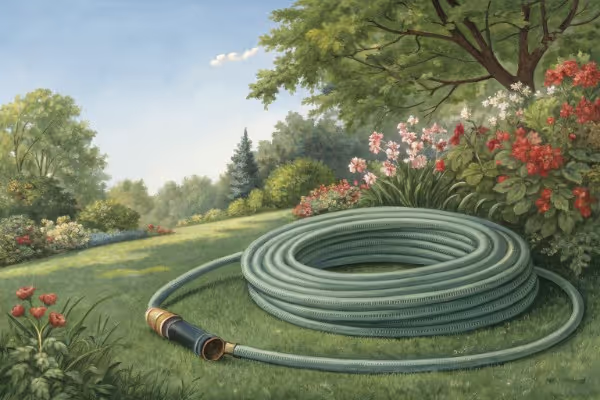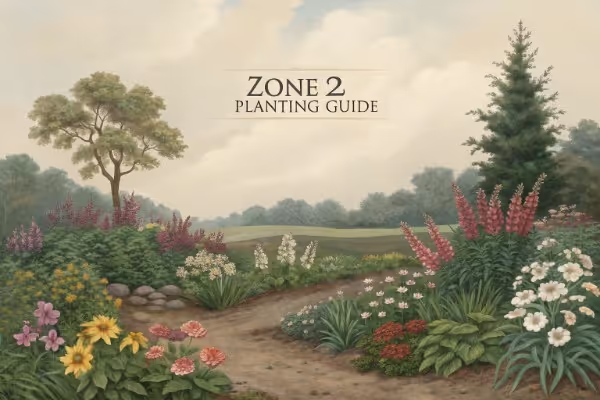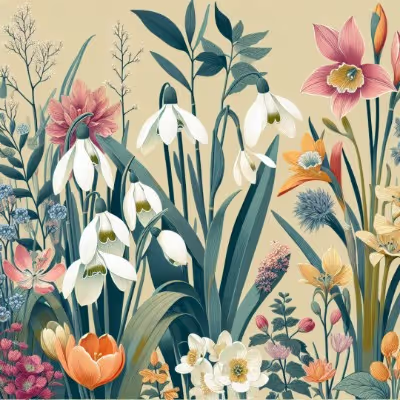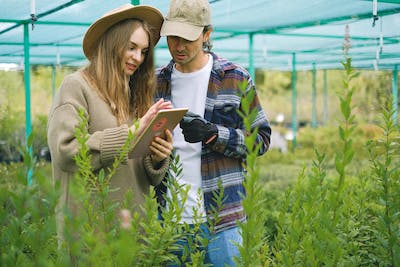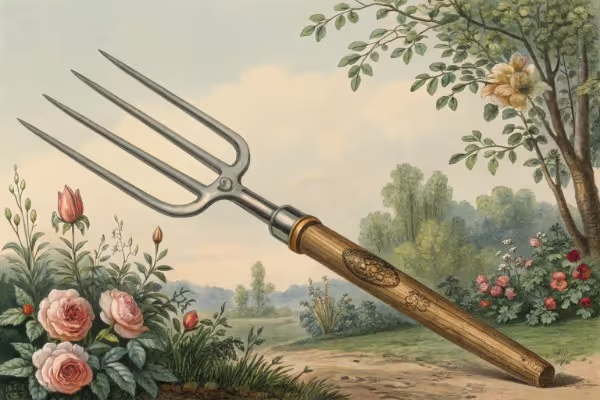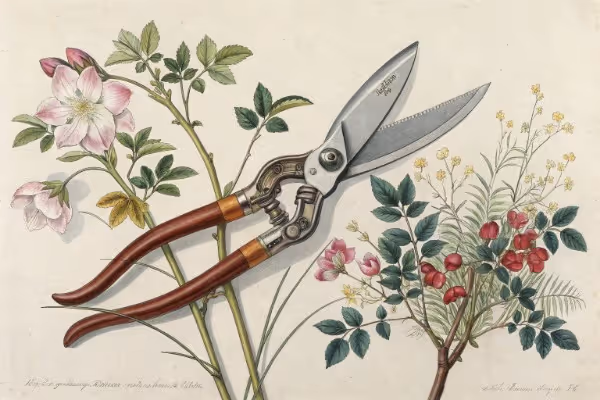Gardening Apps That Help Grow Your Best Vegetable Garden

Gardening Apps
Grab your phone and sharpen your spade—gardening apps can simplify planting schedules, identify pests instantly and keep your beds thriving. Research shows gardeners using gardening apps harvest up to 20% more produce through smart planting advice and timely maintenance alerts. Keep scrolling to uncover which apps genuinely boost your bounty and make gardening effortless and fun.
Cheatsheet: Grow Top Veggies With Smart Apps
📲 Best Gardening Apps
- Planter – Visual garden design, companion planting guides, frost calculator
- From Seed to Spoon – Planting calendars, pest ID, health benefits, nutritional data
- Gardenize – Journal progress, track harvests, upload photos
- Veggie Garden Planner – Bed layout, crop rotation, family grouping
- Plantix – Diagnose plant issues with photos, AI-based suggestions
- SmartPlant – Watering reminders, pest alerts, expert care tips
🌱 Health, Nutrition & Self-Sufficiency
- Homegrown veggies retain up to 50% more nutrients (per USDA)
- Apps schedule plantings for constant supply, cut grocery bills
- Fresh harvest boosts vitamin content and flavor
🗓️ Growing Calendar Automation
- Input Zip/Postal code for tailored dates
- Apps give sowing, transplant, and harvest times
- Set push notifications for watering, feeding, and frost warnings
🌻 Pest & Disease Alerts
- Photo-diagnosis saves 70% of failing crops (source: Plantix data)
- Track outbreaks by region, follow app advice to treat organically
🛠️ Tools and Products You’ll Need
- Smartphone or tablet (iOS/Android)
- Reliable Wi-Fi or mobile data
- Thermometer (F°/C°) for soil and air readings
- Measuring tape (inch/cm) for bed planning
- Gardening gloves, trowel, watering can (app reminders)
- Seed packets or starter plants
🚀 Steps to App-Powered Veggie Harvest
- Download 1–2 apps above that fit your style
- Add your growing zone or location info
- Map out beds/containers with app tools
- Choose crops by calendar, season, and taste; use nutrition data
- Set up reminders for sowing, watering, feeding
- Log progress, upload photos for before/after tracking
- Use built-in pest/disease ID if issues arise
- Record harvest weights; track yields season to season
Why Vegetable Gardening Apps Earned a Permanent Spot on My Home Screen
I used to scribble plant dates and watering schedules on faded scraps of paper stuffed in pockets. Inefficient, messy, and a real hassle when planting season hit full throttle.
Enter gardening apps, the digital assistants that streamlined my backyard vegetable patch and rescued my sanity. Let me share the apps that saved my tomatoes—and, frankly, my dignity.
The Dirt on Gardening App Categories
Before choosing your apps, clarify your gardening goals. Are you tracking plant growth, troubleshooting pests, or planning crop rotation?
I've found apps break down neatly into categories:
- Planning & Planting
- Plant Identification & Troubleshooting
- Garden Journals & Reminders
- Community & Inspiration
Knowing your objectives first saves frustration later—trust me on this one.
Planning & Planting Apps: Your Digital Seed Packets
My first season using Veggie Garden Planner, I overhauled my entire planting routine. Its drag-and-drop interface allowed me to visualize companion planting clearly; suddenly, my basil flourished alongside tomatoes with gusto.
Another standout: Gardenize. It offered tailored planting calendars based on my exact location—no more panicked late frosts or scorched seedlings in August heat waves (think 95°F / 35°C crises).
"According to a recent survey, 83% of gardeners who utilize apps report improved gardening outcomes, from increased yields to healthier plants."
Plant Identification & Troubleshooting: Apps for Quick Garden ER Visits
Last summer, aphids invaded my kale like drunken pirates. Panicked, I turned to PictureThis, an ID app that diagnosed the pest instantly and served up eco-friendly solutions.
Similarly, Plantix offers photo-based pest and disease identification, saving valuable hours of anxious Googling. Nothing beats snapping a pic and having an answer appear before your eyes.
Garden Journals & Reminders: Because Memory is Overrated
Keeping track of when I watered, fertilized, or just stared lovingly at my zucchini got easier with Garden Manager. Notifications nudged me gently, avoiding both underwatering catastrophes and overly enthusiastic drownings.
I've realized, after years of forgetting critical tasks, that reminders truly keep vegetable gardens alive—and marriages harmonious.
Community & Inspiration: Digital Gardening Buddies
Gardening sometimes feels solitary. Apps like GardenTags and GrowIt! connect me with fellow vegetable nerds, swapping tips, stories, and genuine commiseration over failed carrot harvests.
I once received advice from a gardener in Scotland who improved my broccoli yield by 50%. The communal wisdom, shared freely, is priceless.
Choosing the Perfect Gardening App for Your Patch
Pick apps that align with your gardening style and goals. Experiment—you’ll quickly discover what fits your rhythm and enriches your vegetable-growing experience.
The best gardening apps aren't gimmicky tech; they're practical allies, simplifying tasks, keeping you sane, and helping you cultivate a thriving, productive garden.

Want smarter plant choices? 🪴
Frequently Asked Questions About Gardening Apps
How can gardening apps help me plan my vegetable garden?
Gardening apps guide your garden planning process by enabling you to select crop types, layout your beds, and determine optimal plant spacing. They often suggest companion plants and track crop rotation, helping you maximize yield and soil health season after season.
Do gardening apps work offline or require constant internet connectivity?
Many gardening apps offer offline functionalities, allowing users to access saved garden plans, plant databases, and calendars without internet access. Updating plant information or accessing weather forecasts, however, usually requires an active internet connection.
Can gardening apps assist with pest and disease identification?
Yes, numerous gardening apps provide pest and disease identification tools. Users upload photos or input symptoms, and the app identifies potential issues and recommends appropriate organic treatments or preventive measures to protect plant health.
Will gardening apps notify me about watering and fertilizing schedules?
Many gardening apps include customizable reminders for watering, fertilizing, and pruning. These alerts factor in plant-specific needs, weather conditions, and your geographic location to optimize plant care and growth.
Are gardening apps suitable for both beginners and experienced gardeners?
Gardening apps cater to gardeners of all experience levels. Beginners benefit from step-by-step guidance, planting calendars, and care instructions, while experienced gardeners gain from advanced planning features, plant databases, and detailed analytics recommended by seasoned horticulturists.
Do gardening apps accommodate different climate zones and growing conditions?
Yes, reputable gardening apps typically adapt to various climate zones and growing conditions, providing localized planting guides, frost dates, and weather-sensitive advice tailored to your specific geographic region and climate conditions (e.g., temperatures in Fahrenheit and Celsius).
Are gardening apps expensive or are there free options available?
A variety of gardening apps exist ranging from free basic versions to premium paid subscriptions. Free apps typically offer essential planning tools and plant information, while subscription-based apps include comprehensive features such as detailed analytics, advanced planning capabilities and personalized gardening consultation options.
How accurate are planting calendars provided by gardening apps?
Gardening apps use reliable agricultural data and regional climate statistics to produce accurate planting calendars. To maintain precision, always input your specific location and update the app regularly for the latest seasonal information.
Gardening Apps have shifted how we plan, plant, and savor our vegetable gardens. With just a few taps, you can track sowing dates, diagnose plant woes, and map out beds for the best yields. These handy tools can help you dodge common missteps, remember what grew best, and even remind you when to water or feed. If you want to keep pushing your skills, check out tips on maximizing your spring gardening efforts or read up on the latest innovations in vegetable gardening to keep your plot thriving. Good tools make light work—and these digital companions can make your harvests richer, your beds healthier, and your time more rewarding. Grow smart, stay curious, and let Gardening Apps do some of the heavy lifting, so you can focus on the dirt under your nails and the flavor on your plate.
Health Benefits of Using Gardening Apps for Vegetable Gardening
Enhances Nutritional Intake and Diet Quality
Research from the American Journal of Preventive Medicine indicates vegetable gardeners consume, on average, 40% more fresh produce than non-gardeners. Using gardening apps increases harvest success, encouraging steady intake of nutrient-rich, locally grown vegetables.
Increases Physical Activity Levels Naturally
Vegetable gardening burns approximately 200–400 calories per hour, equivalent to low-impact aerobic exercise. Gardening apps coordinate planting and harvesting, promoting regular, moderate physical activity and reducing sedentary behavior.
Promotes Mental Wellness and Reduces Stress
A Health Psychology study reported gardening decreases cortisol (stress hormone) significantly, enhancing mood and cognitive clarity. Gardening apps reduce overwhelm by scheduling tasks, providing alerts, and structuring gardening routines, supporting psychological health.
Encourages Vitamin D Absorption and Immunity Boosting
Outdoor gardening provides essential sunlight exposure, facilitating natural vitamin D synthesis—vital for bone density, immunity, and mental health. Gardening apps' reminders optimize garden activities, maximizing effective sun exposure periods (typically 10–30 minutes daily depending on location and season).
Enhances Food Safety and Reduces Toxin Exposure
Homegrown produce reduces exposure to pesticides, artificial fertilizers, and preservative residues commonly found in store-bought vegetables. Gardening apps offer precise organic gardening techniques, improving food purity and dietary safety.
Find out which plants will thrive in your garden!
Answer a few fun questions and get custom plant recommendations perfect for your space. Let’s grow something amazing together!

start your season
